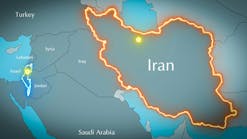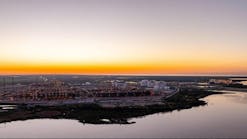With David Knott
from London
To the frustration of journalists, companies sometimes keep quiet about their drilling plans and operations.
A refreshing exception to the rule is Coplex Resources NL of Hobart, Tasmania.
Coplex is operator and 37% interest holder in the GSEC 72 exploration license in Manila Bay, Philippines. The story of the company's recent well there typifies the drama of the hunt for oil and gas.
Early last year a group led by Coplex bought the Pioneer Driller semisubmersible rig, which would first drill the 1 Manila Bay wildcat in 75 ft of water, 30 km from Manila (OGJ, Feb. 6, 1995, p. 40).
Coplex estimated the Manila Bay prospect's potential reserves at 500 million bbl of oil or 1-2 tcf of gas. A gas discovery that size could provide enough fuel to meet the power requirements of the Manila area's 13 million people for 20 years, Coplex said.
Coplex drilled its 1 Manila Bay last year. Projected to 11,000 ft, it was suspended at 7,430 ft after attempts failed to control water influx (OGJ, Sept. 18, 1995, p. 82).
Early optimism
Coplex spudded 2 Manila Bay last April, targeting the same limestone formation. In early May the drilling team detected hydrocarbons, and Coplex Chairman Ken Fellowes was optimistic.
Fellowes said, "The fact that strong fluorescence has been noted at 11,540 ft indicates the presence of liquid hydrocarbons and suggests the well has entered the condensate zone."
Fellowes reported the well cut two unexpected potential gas bearing pay zones of 165 ft and 190 ft, above the target.
The target provided "strong gas shows" between 9,844 ft and 11,126 ft. And for about 500 ft below this was another "bonus" sandstone/clay structure indicating gas and liquids.
In any good story the protagonists face problems. With 2 Manila Bay, these took the form of disappointing results from drillstem testing. Unlike many storybook endings, the problems were insurmountable.
Test results
The first test at 11,500-550 ft was inconclusive because of cement plugging of the fractured zone. Coplex decide to acidize the well after opening a further pay zone at 11,460-500 ft.
The interval 11,420-550 ft flowed 110 Mcfd of gas during a second test. A gas analysis showed hydrocarbons ranging from methane to pentane.
A third test, at 10,550-600 ft, flowed 32 Mcfd of gas. The fourth and final test, at 6,720-80 ft, flowed only a trace of gas. The well, deemed noncommercial, was plugged June 5.
Fellowes adopted a "lost the battle but not the war" stance: "The well has confirmed the geological model envisaged for the basin, and the results auger well for further exploration not only in Manila Bay but also in adjacent onshore areas where a number of prospects have been identified."
For Coplex the story of 2 Manila Bay may yet have a happy ending. British Gas plc will decide by the end of July whether to exercise an option to acquire a 25% interest and operatorship of the block.
Copyright 1996 Oil & Gas Journal. All Rights Reserved.

